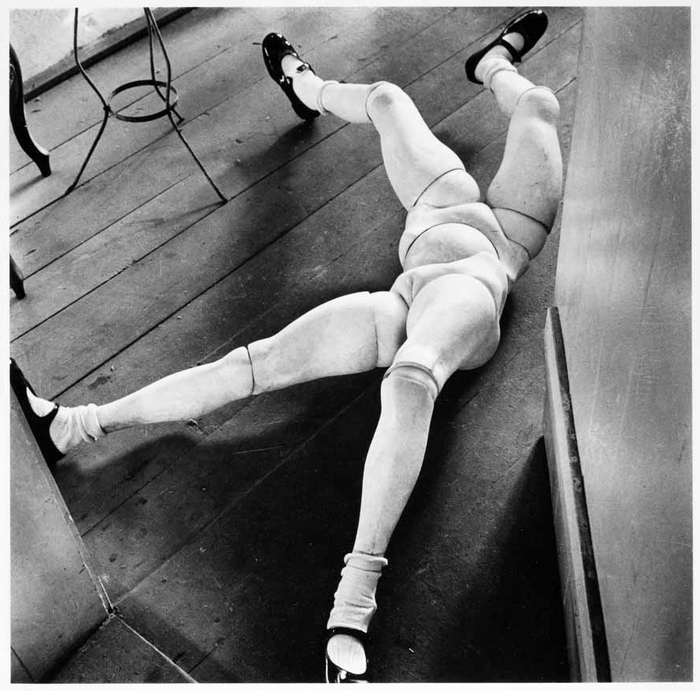In this collection of new works, artist Peter Depelchin draws from his expansive personal library of art history, inspired by the of several Roman and Greek classical sculptures which portray Salmacis & Hermaphrodites from the in the Greek mythology of Metamorphoses, and a old hellenistic quote which in one sentence refers to the encounter of Pan and Hermaphrodites.
The formation of the works began after viewing the marble sculpture “Satyr Struggling with a Hermaphrodite” during his residency in New York City. Depelchin became intrigued by the story of Hermaphroditus. The offspring of two Olympians, Hermaphroditus is rarely mentioned in literature, however is well-represented by statues. Hermaphroditus, is often portrayed in Greco-Roman art as a female figure with male genitals and depicts scenes complex gender roles.

Unknown sculptor
“Satyr Struggling with a Hermaphrodite”
c.150 B.C.
Marble

Peter Depelchin
"Pan & Hermaphrodites III"
Chinese ink & acrylic paint on paper
Depelchin began researching other representations of the encounter of Pan and Hermaphroditus. He read through his own huge art library and expanded his research online which resulted in the discovery of ten other sculptures. Depelchin then recreated the postures of those historic sculptures with three modern dance models and asked them to improvises movement from one posture to another. This session resulted in hundreds of pictures which Depelchin selected four to base his works from.
Once back in Belgium, Depelchin began to create studies for his large 8ft drawings by collaging samples of several historical references. He scanned images from his art history books onto the photos using an old copy machine and the primitive technique of cut and paste. After having done so, he then added ink and ballpoint details to make the images look comprehensive. While creating the collages, Depelchin focused on adding intrinsic layers of meaning with the presence of several cultures, artists work and historical imagery, creating a universal language in the narrative of Pan and Hermaphrodites.
In the first collage, Depelchin introduces the role of flora that plays a major role throughout the series. A marguerite flower is offered in the first encounter of the mythological characters and is a symbol of love and innocence. This image is all about the flirtation, the courting of Hermaphrodites. Pan offers the flowers, but also turns to hide the enormous growth that sprout from his groin. Hermaphrodites is delighted by the gift. Pan wears a fluffy feather hat with gentle eyes that look adoringly on the goddess. Hermaphrodites wears a crown of vulture heads, which reveals her as prey. The abstraction of Hermaphrodites' face in the first and the last images of the series reference to the Indonesian puppet-shadow plays, called 'Wayang'.

Peter Depelchin
Pan & Hermaphrodites I, study
2016
Scanned photos, collaged cut out of historical art references, pen & ink drawing on paper
The second collage is a dance, it is the extreme seduction of Hermaphrodites. Pan's hat transforms into a large horn of a goat. He holds a pen in his hand that symbolizes the splattering of ink and an imminent penetration. Hermaphrodites turns her head away, refusing to look him in the eyes, now realizing Pan's real intentions. In this collage, Depelchin sketches the hands of “Saint Lucy”, by Francesco del Cossa where the saint holds a stem of two eyes and a feather in the other.

Cossa, Francesco del
“Saint Lucy”
c. 1473/1474
tempera on poplar panel
In the third image Depelchin shows us a violent fight between both figures. Pan now having a third leg (a formal reference to the German Artist Hans Bellmer) and horn that protrudes from his belly which keeps Hermaphrodites firmly in place. The horn pierces her body (announced by the pen in the second image) and comes out of her mouth as a branch with leaves. Hermaphrodites on the other hand, hides her face, an innocent face. The face seen here is is from a Rogier van der Weyden painting, one of the most famous flemish primitives. Leaves grow all over both characters, as they slowly become prey of their most basic instincts.

Rogier van der Weyden
“Portrait of a Lady”
c. 1460
oil on panel

Hans Bellmer
“La Poupée”
c.1938
photo-gelatin silver

Peter Depelchin
"Pan & Hermaphrodites III", study
2016
Scanned photos, collaged cut out of historical art references, pen & ink drawing on paper
Finally in the fourth image we can see Pan transformed in a huge minotaur. Still there is some gentleness in his eyes as he knows now that Hermaphrodites has submitted: his dominance is complete. The bull head paying homage to Pablo Picasso's 'Vollard Suite' where he exploits the Minotauromachy, is a theme that often seen throughout Depelchin's work. Pay attention to the flames the minotaur’s hands, they are the written dutch word 'vlammen' in the original collage (translated as flame or fire in english), but changed into a mystical Persian scripture in the drawing. Depelchin is fascinated by Eastern and Iranian miniatures. The motive of a flame being held in the hand or as an aura around a figure is very common in these old medieval paintings on paper.


Pablo Picasso
“Scene Bachique au Minotaure”
c. 1933
etching

Sultan Muhammad
“The Ascent of Muhammad to Heaven”
c. 1539-43
opaque watercolor and ink on paper
The collages then are interpreted into drawings, laboriously rendered on large reams of paper with Chinese ink and acrylic paint. The process of cross hatch and pointillism combined with intense blocks of pattern and detail are typical of Delepchin’s work. This combination justly evokes visionary images with both Oriental and Occidental cultural influences. Likewise does his grip on several ancient printmaking techniques such as woodcut and intaglio.